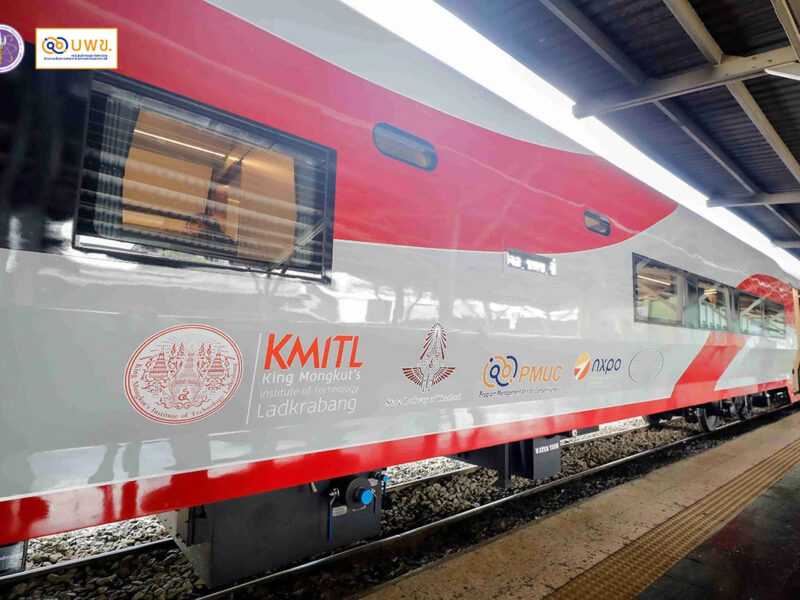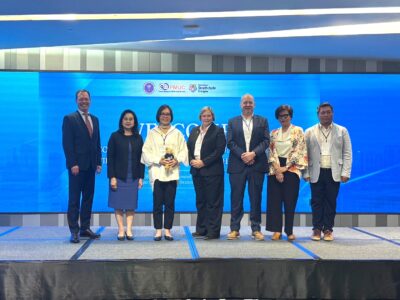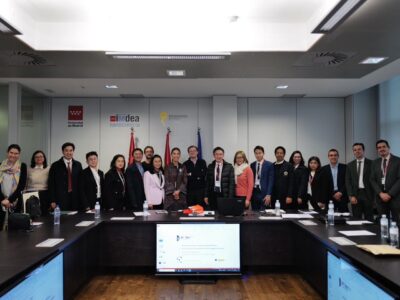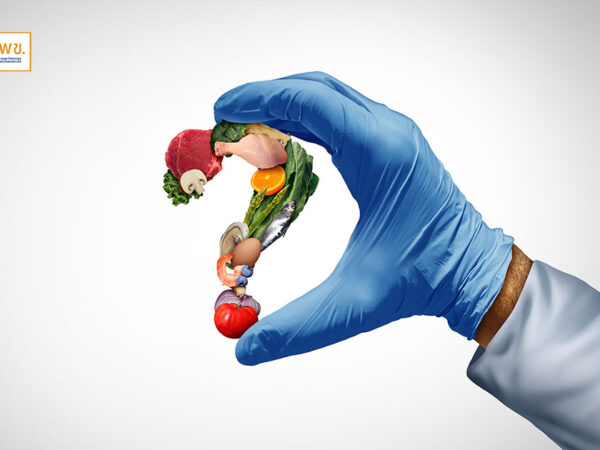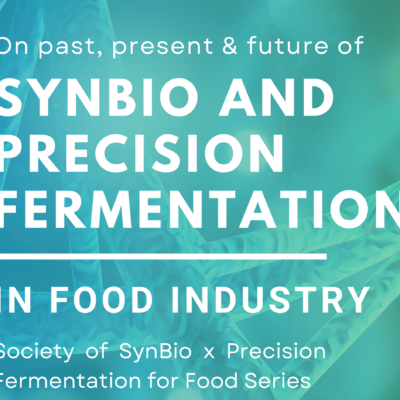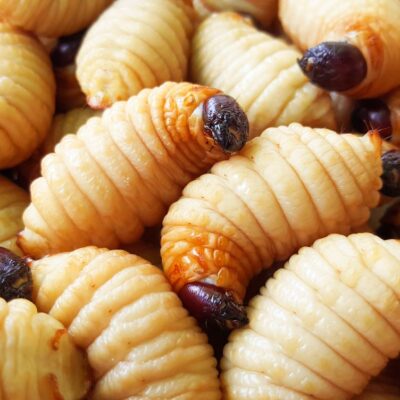Project to develop essential extracts for food enhancement, helping to increase the value of Red Siamese Turmeric, an indigenous herb of the southern region.

Assoc. Prof. Dr. Thongchai Suwansichon, deputy director of the Program Management Unit for Competitiveness (PMUC), along with the High-value Food Subcommittee followed up on the progress of the project to develop turmeric extract as a functional nutrient in food and beverages. Asst. Prof. Chatchai Wattanapiromsakul, Ph.D., Faculty of Pharmacy, Prince of Songkhla University, head of the research project welcomed the visitors and presented the progress of the project (September 2022).




The project aims to develop turmeric extract as a functional ingredient in food and beverages by focusing on extracts with high content of curcuminoids to be further formulated into healthy foods and beverages. One notable application is to develop product prototypes from leftovers from the turmeric extraction process, which is being developed in collaboration with Chotiwat Manufacturing Public Co., Ltd., a private sector partner and a manufacturer and exporter of sealed food products and frozen food products such as canned tuna, canned salmon, steamed and frozen tuna, etc. Chotiwat Manufacturing Public Co., Ltd. is interested in the development of functional food products and medicinal food using turmeric as an ingredient in producing food for the elderly and for the sick to be expanded to serve both domestic and international markets.
Turmeric is a medicinal plant that has been widely accepted and used for a long time as an herb that provides curcuminoids with many health properties, including anti-inflammatory effects, antioxidants, memory nourishment, bone support, anti-aging, and promotion of the immune system, etc. This research project sources the Red Siamese Turmeric from the farmers group in Khuandon and Ban Ta Khun districts, Surat Thani Province, which, unique to the south, is famous for having high levels of curcuminoids. It has a spicy taste and the yellow color is suitable for cooking or to extract high quality and highly concentrated medicinal active ingredients.
From the follow up on the project to produce turmeric extract with high content of curcuminoids to replace extract imports from foreign countries, it was found that extraction process using ethanol as a solvent was able to provide curcuminoids in amounts as high as 67% in the form of course powder extracts and in liquid micro-emulsions, and produced a sample of a micro-emulsion with ideal particle size, emulsion time, and stability, ready to be added as a component of various functional foods. In addition, the development of starch from leftovers of the turmeric extraction process was also studied. The result was a smaller amount of powder, which still retained the yellow
color and lesser quality in comparison to starch extracted from fresh turmeric eggs (new shoots or root nodules that store nutrients for the whole plant), which provides more starch content. Therefore, the study on the development of starch from leftovers from the extraction process still requires more time and improvement.
Subsequently the research results will ultimately lead to the registration of the extract and products from turmeric, and the research team and entrepreneurs are working to get the extract registered as an active ingredient in food. This has never been done before and is in line with the objective of the Functional Ingredient and High-value Agricultural Products and Health Foods Subcommittee, PMUC, in pushing research to maximize benefits and ultimately achieve viable products, and creating a competitive advantage for Thailand.
A Research Project to Develop Production Process for a functional food ingredient “Pattalung Sangyod Rice” towards commercialization.

A visit to followup on the progress of the project to enhance the production of functional ingredients from colored rice with Thai identity for commercialization: Sangyod rice project, led by the project leader Assoc. Prof. Santad Wichianchoke, Faculty of Industrial Agriculture, Prince of Songkhla University Hat Yai Campus, who provided details on the progress of the 1st project that the project aims to study the production of functional ingredients from Sangyod rice, in four products, namely 1) stabilized rice bran 2) cold-pressed rice bran oil 3) pre-hydrolyzed rice starch, and 4) rice protein. The main objective is to conduct research on production process at the prototype factory level, quality control process to meet accepted standards, and to ultimately lead to actual production in facilities that are GMP standard certified in order to produce products that can lead to FDA registration as functional components of stable rice bran and cold-pressed rice bran oil.

Pattalung Sangyod Rice is a rice with high nutritional value. It has a red color due to high anthocyanin content, and contains high quality protein from rice bran. It is a good source of bio-active peptides, has anti-carcinogenic properties, reduces blood pressure, and provides high levels of antioxidants. The protein in the bran or rice grains does not cause allergies and is a protein that can be digested better than other cereal proteins such as wheat, corn, barley and sorghum. Sangyod rice has also been registered as a Thai geographical indication, therefore it is very suitable for registration as function components to create economic value for agricultural products which promote unique identity of Thailand. At present, there has not been an established industry for processing of Sangyod rice. Most of the initial processing is not complicated, such as paddy that has been milled to get coarse rice, grits and rice bran, grinding Sangyod rice into flour for making food products or bakery, or roasting the rice to get cooked and dried rice to be used as raw materials for food and beverages, or as a component in the production of cosmetics, or the production of rice bran oil by cold pressing method, etc.

Sangyod rice, according to the Thai National Rice Strategy 2020-2024, is considered a rice with special characteristics, which can be used as a raw material for functional foods in a niche market. The Euromonitor estimates that the world’s functional food market is worth about 180 billion US dollars and has a growth rate of more than 5% per year. For Thailand, it is estimated that the functional food market will be worth 68 billion baht and is a market that is expanding significantly. The project to enhance the production of functional ingredients from Thai colored rice for commercial use: the pilot case of Sangyod rice, supported by PMUC, is considered a good pilot project to pioneer the functional foods market.
The co-investors and co-stakeholders from the private sector who have interest in the research project are local companies that have Sangyod rice, and have extensive experience in the production and distribution of products from Sangyod rice, have high potential, and are ready to receive technology transfer. There are factories that meet such standards, namely Ban Khao Klang Community Enterprise, Ban Thai Herb Co., Ltd., Kochasilp Beverage Co., Ltd., and Ory Natural Products Co., Ltd.


According to the first progress report of the research project, the production and extraction processes that were achieved at the prototype factory level include stable rice bran production, cold-pressed rice bran oil production, production of partially digested proteins, as well as production of ground brown Sangyod rice of which starch content has been pre-hydrolyzed. All these processes are ready to be passed on to entrepreneurs to further enhance their production processes and enter into the product registration process to finally achieve full commercialization.
PMUC supports the expansion of innovation to add value to “Rubber Latex Serum” and to promote it to become the ultimate functional food product and cosmeceutical.

The High-value Food Subcommittee visited to see the progress of “Innovation and Promotion of New Rubber Industry Chain: Dietary Supplements, Biological Medicines/(Bioceuticals) from Para Rubber Serum” with Asst. Prof. Pharmacist Thanawat Phitakpornpreecha, Ph.D., director of the Center of Excellence in Biotechnology Research and Development: from Raw Latex to Commercialization, Prince of Songkhla University, serving as the project leader. The project has two main objectives: 1. To develop high-value anti-cancer food supplements from latex serum extracts, which is a research study on the development of a prototype factory at the industrial level with GMP standard for a fully-integrated production of extracts and bio-substances from latex serum and for the production of commercial BGOs dietary supplements; and 2. development and quality certification of medicinal latex serum extract for registration of novel food with health claims regarding BGOs produced from latex serum; as well as study of the molecular mechanism of BGO substance; and clinical study phase II of BGOs on cervical cancer patients.

Thailand is the world’s number 1 rubber producer and exporter. In 2020, there are more than 25 million rais of rubber plantations in the country, producing over 4.9 million tons (data from the Office of Agricultural Economics). However, due to wild swings in global prices of latex affected by the global economic conditions, and the fact that the domestic rubber industry focuses on the basic upstream processing of rubber for export as a basic material for industrial application. For this reason, the research team under the administration of the Center of Excellence in Natural Rubber Latex Biotechnology Research and Development (CERB), which has continuously developed research for more than 15 years to achieve innovation in the production of various high-value biological active substances, as well as enzymes that have the potential to be applied in the production of high-value compounds. This includes extracts for cosmeceuticals; substances that have anti-cancer effects at the cellular levels in test animals and in humans; substances that have anti-Alzheimer’s properties; and high-value precursors for drug synthesis. “Latex serum”, which is the main component in latex, making up to 65% and is a by-product from the rubber production process. Therefore, this research is in line with the country’s strategic direction to promote a BCG Economy, and is considered to add value to latex, helping to increase the country’s competitiveness in high-value food industry.
The objective of the research is to take serum from rubber, which is considered an industrial waste, through a specific process to digest β-Glucan to the desired particle size. Research shows that the molecular weight of β-Glucan can be reduced to a very small molecular size of 5 – 100 KDa, which has the ability to deliver essential extracts deep into the dermis and strengthen the skill cells. These small molecule β-Glucan has been given the trade name BGOs.
β-Glucan is a type of polysaccharide which occurs from the arrangement of single sugar molecules of beta glucose in specific formations depending on the source. It is found in the cellular walls of yeast, fungi, algae, mushrooms, oats, barley, etc., with the ability to stimulate the immune system in the body to be more effective. When beta-glucan enters into the body, Macrophage, a group of white blood cells, are activated and enabled to effectively detect cancer cells. There are more than 1,000 academic studies confirming the effectiveness of beta-glucan which can stimulate the function of the immune system, especially beta-glucan in the beta 1,3/1,6 glucan group, which is the most effective beta-glucan group in stimulating the immune system. Beta-glucan is also used in the facial cosmetics and beauty industry. According to a report from the Thai Journal of Pharmaceutical Sciences (TJPS), Development of Skincare Cosmetics from Yeast Beta-glucans, tests show that Beta-glucan can very effectively add moisture to the skin.
When looking at the market and the expansion trend in the global cosmetic industry that continues to grow in the year 2019, the industry is worth about 380 billion US dollars. The growth rate (CAGR) is 5.8% and is expected to reach 463 billion US dollars in 2027 (source: www.alliedmarketresearch.com). The biggest share in the cosmetic industry is Asia, up to 46 percent, followed by North America, Western Europe and Latin America. with market share of 24, 18, and 8 percent, respectively. The product group with the highest market share is skin care products with a market share of 46.8 percent, and when considering the use of specific skin care, it has a market share of 81% facial care, 12% body care, 6% sun protection, and 1% oral care. Due to recent lifestyle changes made by consumers to adapt to the “new normal”, Thai people are increasingly taking care of themselves at home. According to a Nielsen survey, more than 35 percent of Thai population are switching to taking care of themselves at home more as a new way of life. This observation is in line with findings from the Hong Kong Trade Development Council (HKTDC) research, indicating that more than 81 percent of Thais still have a habit of spending money on skincare products, even in the economic downturn from the COVID-19 crisis. And when analyzing the beauty community, it is evident that the trend of using Twitter to discuss and exchange opinions about beauty products shows an interesting number. Citing data from Euromonitor on “Asian Beauty and Personal Care Trends” and Global Web Index Q3/62-Q2/63 data, it was found that 77 percent of Thai people who use Twitter are interested in skin care. And 72% of people who use makeup look for reviews and information about new beauty products via the platform. Twitter also has a high number of discussions about personal care products, or about 60 million tweets.
Resulting the development and quality certification of bio-based medical latex serum extract for registration of novel food, combined with the study of the molecular mechanism of BGOs to evaluate the anti-ulcer and anti-inflammatory effects of the β-Glucan oligosaccharide (BGOs) from latex serum, BGOs product samples were tested without toxic methanol or formic acid contamination. Heavy metals also were detected within safe standard and no protein contamination was detected. Passing the preliminary testing process will lead to the process of requesting bio-material quality certification. As for the evaluation of the anti-ulcer activity, it was found that rats continuously exposed to BGO at concentrations of 50, 100 and 200 mg/kg B.W. had less gastric ulcer than rats that had no exposure, and had similar amounts of lesions compared to the rats that received conventional medication.





